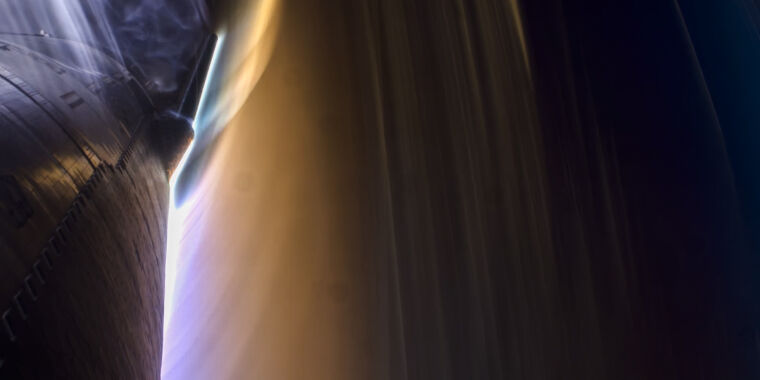Pretty cool.
It’s a truly awesome video, SpaceX purposely mucking with protective tiles, of a rocket reentry testing the limits.
Trying to catch the next one feels pretty spicy. The IFT4 booster was coming in pretty hot in the video SpaceX posted. The next TX tower is starting to come together, though.
The next TX tower is starting to come together, though.
Yeah, at their current launch cadence of every two to three months, it seems plausible that IFT-5 could happen in August, and IFT-6 in October. Even if they damage the tower during an IFT-5 catch, the second launch tower might be ready not long after.
I’m really hoping the 2-3 month cadence speeds up to monthly now that the vehicle is more reliable and controllable (and not needing as many mishap investigations…) and they’re presumably improving pad hardware and procedures.
This is the best summary I could come up with:
SpaceX demonstrated Thursday that its towering Super Heavy booster and Starship rocket might one day soon be recovered and reused in the manner Elon Musk has envisioned for the future of space exploration.
NASA also has an interest in Starship’s success because the agency selected it to fill the role of human-rated lunar lander for the Artemis program to ferry astronauts to and from the surface of the Moon.
“Its accomplishments will provide data to drive improvements as we continue rapidly developing Starship into a fully reusable transportation system designed to carry crew and cargo to Earth orbit, the Moon, Mars, and beyond.”
This put the ship on the proper suborbital trajectory to reach a peak altitude of 132 miles (213 km) before Earth’s gravity pulled the 165-foot-long (50-meter) vehicle back into the atmosphere around 47 minutes after launch.
Dazzling live views from cameras aboard the rocket, relayed to the ground through SpaceX’s Starlink broadband network, showed purple and orange plasma pouring over the vehicle as it glided through the atmosphere over the Indian Ocean.
Finally, three of the Raptor engines on Starship reignited, and the rocket flipped from a belly-down orientation to a vertical position a few hundred feet over the middle of the Indian Ocean, according to SpaceX.
The original article contains 959 words, the summary contains 210 words. Saved 78%. I’m a bot and I’m open source!



